

 The new “no sulphur” trend
The new “no sulphur” trend
There is a new trend, still in its infancy. But it will – most likely – increase. You see it in France and probably in other wine countries as well. It is the “no sulphur” trend. Or to be more precise the “no added sulphur” trend.
You might be thinking “this is nothing new”. But this is not about “natural wine”. In fact, “natural wine” often has a little bit of added sulphur, just like most other wines. And it is not a question of organic wines either.
Instead, it is about satisfying consumers who want to avoid sulphur. And that’s it.
How the wine has otherwise been made is of lesser interest. The producers do not refrain from additives (except sulphur) or various process aids. On the contrary. These wines are often quite inexpensive and unpretentious but are sold with “no added sulphur” as an argument. To stabilize them without using sulphur they use other additives or maybe flash-pasteurization.
Volume producers such as Gérard Bertrand and several cooperatives in southern France have launched wines without added sulphur. Sometimes the wines are organically certified, sometimes not.
However, no one labels their wines as “without sulphur”. “Added” is an important clarification. During fermentation, the yeast produces sulphur, so virtually all wines inevitably contain sulphur.
As mentioned, the trend will most likely continue. The more wines that say “without added sulphur” on the label, the more consumers will question the use of sulphur. Many consumers have never even realised that the wines they drink may contain sulphur.
In a way, one wonders what drives this trend. Why do consumers want “without sulphur”? Sulphur is good in many ways, it kills unwanted bacteria and other microorganisms, stabilizes the wine and makes it less fragile. It is used in many other foods as well.
Is it simply that “sulphur” sounds awful and dangerous and very “chemical” and therefore consumers take it for granted that it is better without it?
So, then, what if you replace sulphur with something else? Is it better or worse? From a marketing standpoint, it is clearly better. Sulphur has a bad reputation. One neat thing about this whole discussion, however, is that the sulphur alternatives are natural too. Like sulphur. How about dead yeast as an alternative? Dead yeast cells are already doing magical things with both champagne and white burgundy aged sur lie, on a bed of dead yeast cells. Now, dead yeast has been given yet another task.
It is perhaps questionable if “with added dead yeast cells” sounds better from a marketing point of view. Instead, we will probably hear a lot more of the word “bioprotection”.
Read more about sulphur and yeast in the Brief.
And a few words about wine tours!
If you hurry we have some place left on the Champagne Tour in a couple of weeks’ time (due to an unfortunate cancellation).
Otherwise it is high time to think of your wine tour this winter, to brighten up the dark season.
There are two to choose from:
South Africa, that takes you to some of the very best producers in the country (not always easy to find on export), with wonderful wines, beautiful landscapes, and fantastic people.
New Zealand, a big tour in many ways that takes you on a voyage from the north to the south of New Zealand, plenty of wine, meetings with legendary wine producers, seals, lobsters, glaciers and much more.
Book a “world’s top wine tour” (as Travel+Leisure said) with BKWine Tours, we know wine and we know wine travel. This is what we do, it’s not a hobby or a secondary activity.
Enjoy the Brief!
Britt & Per
PS: Recommend to your friends to read the Brief or – forward it to them (click here to send them the Brief)!
– – – – –
What’s on at BKWine Tours
2019
- Champagne, September 11-15, 2019
- Bordeaux, October 2-6, 2019
2020
- Chile and Argentina, January 20 – February 2, 2020
- South Africa, February 15-23, 2020
- New Zealand, March 9-24, 2020
- More to come
For more information please contact us on email or on phone (we’re on French time), or go to our wine travel site on www.bkwinetours.com!
We also make custom designed wine tours – on-demand tours for you and a group of friends, for your company (maybe to scout new winegrowers?), for a special event… We can combine winery visits and wine touring with other activities: gastronomic workshops, visit to an oyster farm, truffles hunting, cheese making, and more. More info on the custom designed and bespoke BKWine wine tours and travel here!
Read our book(s)
We have written several wine books, nine at the last count. One of them has been translated to English; the others are (so far) only available in Swedish. This is the one that is available in English: Biodynamic, Organic and Natural Winemaking, Sustainable Viticulture and Viniculture
All our books are on wine, but on different subjects: wines of the Languedoc, wine growing and wine making, the wines of France, Tuscany, Bordeaux, Piedmont, Burgundy, Champagne. Several have won prestigeous prizes and awards. Read more on our wine books.
From the World of Wine
In Brief
In short, news and stuff from the world of wine.
Can California save its cabernet sauvignon from climate change?
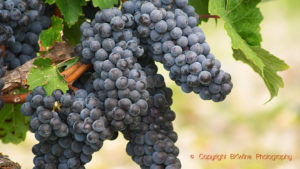 How to best prepare for climate change is a major topic of discussion at vineyards around the world. Some people talk about changing grape varieties, to ones that can better withstand heat and drought. But some are very attached to their grapes. The University of California has therefore started an interesting research project. The idea of the project is to investigate which combinations of clones and rootstocks of cabernet sauvignon provide the best solutions for future harvests.
How to best prepare for climate change is a major topic of discussion at vineyards around the world. Some people talk about changing grape varieties, to ones that can better withstand heat and drought. But some are very attached to their grapes. The University of California has therefore started an interesting research project. The idea of the project is to investigate which combinations of clones and rootstocks of cabernet sauvignon provide the best solutions for future harvests.
Prior to the project, cabernet sauvignon vines have been planted in Lake County, north of San Francisco. Ten different clones and ten different rootstocks in different combinations have been planted. Over the next 8 to 10 years, a large amount of data will be collected. They will, among many other things, measure how water-efficient the different combinations are. Cabernet sauvignon is an important grape for California. It is the second most cultivated after chardonnay. Read more about this research ucanr.
100 hectares of Swedish vineyards
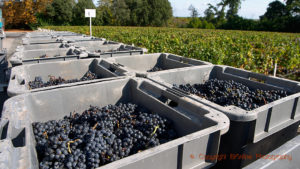 The fact that you make wine in Sweden often surprises foreigners. This is understandable. It is not an obvious wine country. David Morrison, in his blog The Wine Gourd, has taken a closer look at the wine “industry” in Sweden. David is originally from Australia but lives in Sweden. He’s made a good summary of the history of Swedish wine. From the modest start to today’s 250 grape growers, of which almost 50 work more or less commercially. However, most vineyards are very small. They can be a few hundred square meters up to 15 hectares. In total, he says, Sweden has about 100 hectares of vineyards. The grapes are often hybrids that better cope with the Swedish climate. But also pinot noir, chardonnay, merlot, riesling and other Vitis vinifera grapes are planted. David would love to serve Swedish wine to his guests, he says, but, he can’t afford to do it that often. Swedish wine is not cheap. But a lot of effort goes into making it.
The fact that you make wine in Sweden often surprises foreigners. This is understandable. It is not an obvious wine country. David Morrison, in his blog The Wine Gourd, has taken a closer look at the wine “industry” in Sweden. David is originally from Australia but lives in Sweden. He’s made a good summary of the history of Swedish wine. From the modest start to today’s 250 grape growers, of which almost 50 work more or less commercially. However, most vineyards are very small. They can be a few hundred square meters up to 15 hectares. In total, he says, Sweden has about 100 hectares of vineyards. The grapes are often hybrids that better cope with the Swedish climate. But also pinot noir, chardonnay, merlot, riesling and other Vitis vinifera grapes are planted. David would love to serve Swedish wine to his guests, he says, but, he can’t afford to do it that often. Swedish wine is not cheap. But a lot of effort goes into making it.
Read more about the Swedish vineyards here winegourd.
Cloudy Bay’s founder makes “revolutionary” wine in Bordeaux
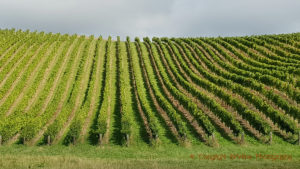 David Hohnen is a renowned winemaker. He first founded Cape Mentelle Vineyards in Margaret River in his native Australia. He then moved to New Zealand and founded Cloudy Bay in Marlborough. The year was 1986. It was a stroke of luck (probably not only luck). Cloudy Bay is today one of the most famous (the most famous?) and talked-about wine estate in New Zealand. In 2003 Cloudy Bay was purchased by French luxury company LVMH.
David Hohnen is a renowned winemaker. He first founded Cape Mentelle Vineyards in Margaret River in his native Australia. He then moved to New Zealand and founded Cloudy Bay in Marlborough. The year was 1986. It was a stroke of luck (probably not only luck). Cloudy Bay is today one of the most famous (the most famous?) and talked-about wine estate in New Zealand. In 2003 Cloudy Bay was purchased by French luxury company LVMH.
Hohnen has now, perhaps a little surprisingly, become a consultant in Bordeaux. He has created a wine for the cooperative Producta Vignobles, called the Bordeaux Revolution. The name shows perhaps to some extent his perception about Bordeaux. The idea is to make a wine that appeals to a generation that is not so interested in Bordeaux. The wine will have a modern style label. The grapes will be mentioned on the label. And the wine will be ready to drink at the moment it is purchased. (Admittedly today not that unusual even in Bordeaux.) Read more about David Hohnen’s project in Bordeaux vitisphere.
Travel: Come and experience New Zealand with us on the wine tour in March 2020!
The right kind of yeast helps to reduce sulphur in wine
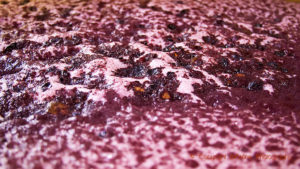 A wine’s sulphur content is increasingly scrutinized. Sulphur dioxide is added to the wine as an antioxidant and stabiliser. But its use has diminished, rather drastically I think, in recent decades, in part thanks to better winemaking technology and knowledge. Sometimes you see “no added sulphur” on a label. But you rarely see a wine that does not have the warning label “contains sulphites”. The reason is that the limit for the warning is low, maximum 10 mg/litre. Very few wines, if any, manage to have less since sulphur is also naturally produced by the fermentation.
A wine’s sulphur content is increasingly scrutinized. Sulphur dioxide is added to the wine as an antioxidant and stabiliser. But its use has diminished, rather drastically I think, in recent decades, in part thanks to better winemaking technology and knowledge. Sometimes you see “no added sulphur” on a label. But you rarely see a wine that does not have the warning label “contains sulphites”. The reason is that the limit for the warning is low, maximum 10 mg/litre. Very few wines, if any, manage to have less since sulphur is also naturally produced by the fermentation.
Research in recent years has shown that there are yeasts strains that produce lower amounts of sulphur than others. The company Lallemand now offers a yeast variety which they call Vitilevure Sensation. This yeast has a very low production of sulphur and also of acetaldehyde, which is important. Acetaldehyde is a substance that binds sulphur. In wine, you have both bound and free sulphur. A winemaker prefers to have as much free (active) sulphur as possible since it is the free sulphur that protects the wine. An interesting thought in the “natural wine” discussion? By adding the right kind of yeast to the must you can lower the sulphur contents. Read more: lallemandwine (pdf).
South Africa’s vineyard surface declining but revenues are rising
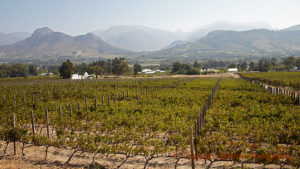 South Africa’s vine surface has declined since 2009 when it was just over 102,000 hectares to today’s 93,000 hectares (table grapes not included). However, wine’s contribution to the country’s GDP has steadily increased during these years. The wine industry is important for the economy, not least in the Western Cape (around Cape Town), where most of the wineries are located. An estimated 300,000 people are involved, directly or indirectly, in the wine industry.
South Africa’s vine surface has declined since 2009 when it was just over 102,000 hectares to today’s 93,000 hectares (table grapes not included). However, wine’s contribution to the country’s GDP has steadily increased during these years. The wine industry is important for the economy, not least in the Western Cape (around Cape Town), where most of the wineries are located. An estimated 300,000 people are involved, directly or indirectly, in the wine industry.
Of the total harvest in 2018, 85.8% went to winemaking, 3.8% went to brandy (a South African speciality), 8.7% to other distillation and 1.6% to grape juice and grape juice concentrate. White grapes take 55.2% of the surface, red grapes 44.8%. Overall, chenin blanc is the most planted grape (much used for distillation) with just over 18% of the surface. Cabernet sauvignon covers 11%, syrah, just over 10%, pinotage 7.4% and merlot 5.8%. There is also an enormous amount of other varieties, planted on very small surfaces. To all wine lovers’s delight. Read more South African statistics here: wosa.
Travel: Join us on our wine tour to South Africa in February. In fact, each tourist coming to the country generates one year’s employment for one person. So visiting the country is a good way to show support.
New Zealand celebrating 200 years as a wine nation
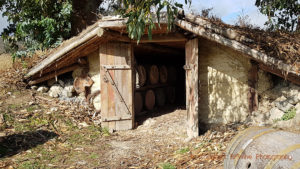 Congratulations! On September 25, 2019 it is 200 years since the first vine was planted in New Zealand. An anniversary well worthy of a celebration, don’t you think? It was the Reverend Samuel Marsden, Chaplain to New South Wales, Australia, who on this day in 1819 planted vines in Stone Store in Kerikeri in the Bay of Islands on the North Island. Maybe New Zealand is the only country in the world that knows exactly when the first vine was planted? However, Marsden did not make any wine, as far as we know. The honour of being the first winemaker in New Zealand goes instead to James Busby. He made his first wine in New Zealand in 1836. Busby is also an important person in Australia. The various cuttings he brought with him from Europe laid the foundation for the Australian wine industry. Surely that merits a glass of Kiwi wine on September 25? Read more about New Zealand’s anniversary here: nzwine (pdf).
Congratulations! On September 25, 2019 it is 200 years since the first vine was planted in New Zealand. An anniversary well worthy of a celebration, don’t you think? It was the Reverend Samuel Marsden, Chaplain to New South Wales, Australia, who on this day in 1819 planted vines in Stone Store in Kerikeri in the Bay of Islands on the North Island. Maybe New Zealand is the only country in the world that knows exactly when the first vine was planted? However, Marsden did not make any wine, as far as we know. The honour of being the first winemaker in New Zealand goes instead to James Busby. He made his first wine in New Zealand in 1836. Busby is also an important person in Australia. The various cuttings he brought with him from Europe laid the foundation for the Australian wine industry. Surely that merits a glass of Kiwi wine on September 25? Read more about New Zealand’s anniversary here: nzwine (pdf).
Travel: Come and experience New Zealand with us on the wine tour in March 2020!
Wine producers’ difficult choices among the wealth of pesticides
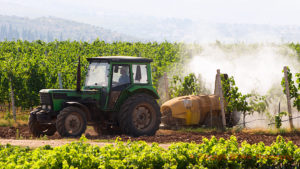 Wine producers are facing difficult choices today. Not least in what way they should manage the vineyard. Conventional, sustainable, organic or biodynamic? They have a variety of pesticides to choose from. More if they grow conventionally, less if they are organic. However, there are very different opinions about how dangerous these products are (e.g. glyphosate) to the environment, the workers and the consumers. Scientific reports point in different directions. At the same time, the EU is imposing stricter rules on what can and cannot be used. For example, the limit on copper was recently lowered.
Wine producers are facing difficult choices today. Not least in what way they should manage the vineyard. Conventional, sustainable, organic or biodynamic? They have a variety of pesticides to choose from. More if they grow conventionally, less if they are organic. However, there are very different opinions about how dangerous these products are (e.g. glyphosate) to the environment, the workers and the consumers. Scientific reports point in different directions. At the same time, the EU is imposing stricter rules on what can and cannot be used. For example, the limit on copper was recently lowered.
Perhaps copper, a fungicide permitted in organic viticulture, will be completely banned in 10 years. Will there be an alternative by then? Or how else is organic farming supposed to be possible? There is currently no organically approved alternative. How dangerous copper is to the life in the soil is also not totally clear, which, of course, adds to the confusion. What is clear, though, is that virtually all producers spray the vineyards, primarily with fungicides. Conventional, organic, “natural”. All. No wine producer “uses no sprays or poisons in the vineyard”. This article in Meininger’s Wine Business International highlights all of these difficulties. There are no simple answers. An interesting read. Read more: drinks-today.
Features
Features that we have published during the past month, with lots of reading for you.
The lord of the chateau who plays music for his wines
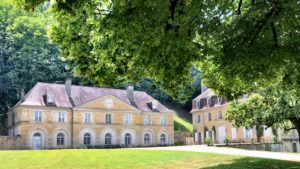 A chateau in the Jura? Can there really be such a thing in this rural area with down-to-earth growers? Yes, there is at least one that fulfils all the desirable criteria for being called chateau. Dating back to the 16th century, a history of war, of peace, owners that were decapitated, expropriation, return, reconstruction and, above all, winemaking. If you add to this, wines of a very high level, the story is worth taking note of. Join us on a visit to the Domaine du Château d’Arlay together with the owners Alain de Laguiche and his wife Anne and you will find out why they play music for the wine you hopefully will get in your glass someday.
A chateau in the Jura? Can there really be such a thing in this rural area with down-to-earth growers? Yes, there is at least one that fulfils all the desirable criteria for being called chateau. Dating back to the 16th century, a history of war, of peace, owners that were decapitated, expropriation, return, reconstruction and, above all, winemaking. If you add to this, wines of a very high level, the story is worth taking note of. Join us on a visit to the Domaine du Château d’Arlay together with the owners Alain de Laguiche and his wife Anne and you will find out why they play music for the wine you hopefully will get in your glass someday.
Read more in Sven-Olof Johansson’s article on BKWine Magazine: Wines from Château d’Arlay in the Jura become beautiful music in the glasses, with good reason.
Moldovan wine classics in modern versions: Chateau Purcari and Castel Mimi
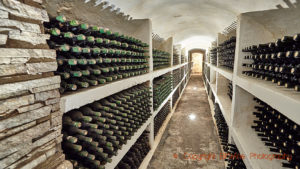 Moldova, the small wine country squeezed in between Romania and Ukraine, are making big efforts to make their wines more well known. Having been hampered in its dealings with the outside world during the Soviet years, it is now making up for lost time. Two of the biggest estates in the country, Purcari and Castel Mimi, both with a pre-Soviet history, are leading the way. Château Purcari and Castel Mimi are both beautiful wine estates with a fascinating past going back to the 19th century. At that time, wine had been made for a long time in Moldova. The country was part of the Ottoman Empire from the early 16th century but wine continued to be produced, albeit in less quantity.
Moldova, the small wine country squeezed in between Romania and Ukraine, are making big efforts to make their wines more well known. Having been hampered in its dealings with the outside world during the Soviet years, it is now making up for lost time. Two of the biggest estates in the country, Purcari and Castel Mimi, both with a pre-Soviet history, are leading the way. Château Purcari and Castel Mimi are both beautiful wine estates with a fascinating past going back to the 19th century. At that time, wine had been made for a long time in Moldova. The country was part of the Ottoman Empire from the early 16th century but wine continued to be produced, albeit in less quantity.
Read more in Britt’s article on BKWine Magazine: Moldovan wine classics in modern versions: Chateau Purcari and Castel Mimi.
Pictures from the new book about Languedoc-Roussillon
 It is difficult to convey a sense of what it is like to travel in a wine district. It is just as difficult to convey a sense of what you may experience when reading a book. But at least we want to try. Earlier this year, our tenth book was published, a new book on Languedoc-Roussillon, the wines, the food, grape varieties and much more. It is a guide to one of the many exciting wine districts found in France. It is above all a book that wants to inspire you to discover more and explore new things. The book contains lots of good wine producers, some presented with a short text, some with longer. The book is also illustrated with many pictures from the beautiful landscapes and vineyards down here in the very southern part of France, close to the border with Spain.
It is difficult to convey a sense of what it is like to travel in a wine district. It is just as difficult to convey a sense of what you may experience when reading a book. But at least we want to try. Earlier this year, our tenth book was published, a new book on Languedoc-Roussillon, the wines, the food, grape varieties and much more. It is a guide to one of the many exciting wine districts found in France. It is above all a book that wants to inspire you to discover more and explore new things. The book contains lots of good wine producers, some presented with a short text, some with longer. The book is also illustrated with many pictures from the beautiful landscapes and vineyards down here in the very southern part of France, close to the border with Spain.
Read more in BKWine Magazine: Pictures from the new book about Languedoc-Roussillon.
“Bad boys of Champagne”, and brilliant champagnes at Vouette et Sorbée
 “Down here in Aube, we used to be called ‘the bad boys of Champagne’” says Bertrand Gautherot, winemaker and owner of Vouette & Sorbée. “But not anymore,” he adds, smiling broadly. Actually, there is no time for either tasting or visits, work in the vineyards must be prioritized, said Bertrand at my initial contact. But OK, come past and we can say hello again. The last time I met Bertrand was when he and his family visited Sweden and held a fascinating tasting of his wines. We settled in the shade outside his modern production hall. The temperature was a straining 35 degrees C, but that was nothing to worry about, said Bertrand, “there is plenty of water deep down”. The “short” meeting lasted for over three hours.
“Down here in Aube, we used to be called ‘the bad boys of Champagne’” says Bertrand Gautherot, winemaker and owner of Vouette & Sorbée. “But not anymore,” he adds, smiling broadly. Actually, there is no time for either tasting or visits, work in the vineyards must be prioritized, said Bertrand at my initial contact. But OK, come past and we can say hello again. The last time I met Bertrand was when he and his family visited Sweden and held a fascinating tasting of his wines. We settled in the shade outside his modern production hall. The temperature was a straining 35 degrees C, but that was nothing to worry about, said Bertrand, “there is plenty of water deep down”. The “short” meeting lasted for over three hours.
Read more in Sven-Olof Johansson’s article on BKWine Magazine: “Bad boys of Champagne”, and brilliant champagnes at Vouette et Sorbée.
Travel: Come on a bubbly wine tour to Champagne this autumn.
Five Wineries You Should Not Miss In South Africa | Britt on Forbes
South Africa has some spectacular vineyards. Not to mention spectacular wines. A new generation of winemakers is now giving the world high quality, complex and exciting wines. Now is the time to discover, or rediscover South African wines. We have several favourite places in the South African Winelands. Here are some of them where you can enjoy gorgeous views, great wines and, at some of them, also really good food. What we like about these South African winemakers is their passion and talent for what they are doing. Their wines can be powerful and concentrated but they always have an amazing drinkability, a lovely freshness and restrained oak flavours.
Read more in Britt’s article on BKWine Magazine, originally published on Forbes: South African wines are changing thanks to these five brilliant winemakers (and others) | Britt on Forbes.
Travel: Join us on our wine tour to South Africa in February.
An excursion among the Riesling wines 2018 from the Mosel
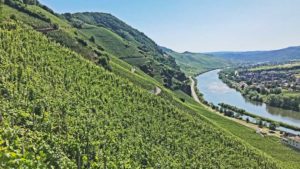 Early morning in July 2019. A pre-arranged schedule involves alarm clock and strong coffee to have the time to go on a bike morning session. On a mountain-bike, Mosel’s makes it a playful educational ride to exhaust the body. Very hilly and with innumerable trails and passes to follow. That the end happened to be in a vineyard under a spraying helicopter that dumped a fog of benign drops was somewhat unexpected. The impression was even stronger after the afternoon meeting with a winemaker whose chief weapon was small secateurs. Each wine region has its own great vintages. For Mosel, the last exceptional vintage was 2015, although ‘16 and ‘17 overall showed good results. 2018 presented some “excitement” for the producers in the Mosel as early as mid-April when some growers woke up to a snow cover on their vines.
Early morning in July 2019. A pre-arranged schedule involves alarm clock and strong coffee to have the time to go on a bike morning session. On a mountain-bike, Mosel’s makes it a playful educational ride to exhaust the body. Very hilly and with innumerable trails and passes to follow. That the end happened to be in a vineyard under a spraying helicopter that dumped a fog of benign drops was somewhat unexpected. The impression was even stronger after the afternoon meeting with a winemaker whose chief weapon was small secateurs. Each wine region has its own great vintages. For Mosel, the last exceptional vintage was 2015, although ‘16 and ‘17 overall showed good results. 2018 presented some “excitement” for the producers in the Mosel as early as mid-April when some growers woke up to a snow cover on their vines.
Read more in Sven-Olof Johansson’s article on BKWine Magazine: An excursion among the Riesling wines 2018 from the Mosel.
“Few books have made me long for southern France like this one” – about our new Languedoc-Roussillon book
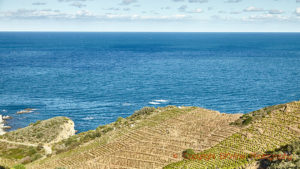 It makes you happy when you read such things. “Few books have made me long for southern France like this one.” This is what Dag Sandahl writes in his review of “Languedoc-Roussillon, the wines of southern France”. Dag continues in his review “there are good reasons to read it and be fascinated by their knowledge that has now become easily accessible”, and also “the most fascinating things in the book may not be so much about grape varieties and soils but about people who are dedicated to creating good wines”. That’s exactly what we hoped to achieve with this, our latest book.
It makes you happy when you read such things. “Few books have made me long for southern France like this one.” This is what Dag Sandahl writes in his review of “Languedoc-Roussillon, the wines of southern France”. Dag continues in his review “there are good reasons to read it and be fascinated by their knowledge that has now become easily accessible”, and also “the most fascinating things in the book may not be so much about grape varieties and soils but about people who are dedicated to creating good wines”. That’s exactly what we hoped to achieve with this, our latest book.
Read more on BKWine Magazine: “Few books have made me long for southern France like this one” – about our new Languedoc-Roussillon book.
Wine in Moldova: Château Vartely and Asconi Winery, two strong newcomers after independence
 After the fall of the Soviet Union, Moldova gained independence. In 1991 the Republic of Moldova was founded. Since then, many new wineries have emerged. Two of the bigger ones of particular interest are Château Vartely and Asconi. Château Vartely is one of the leaders in Moldova both in terms of quantity and in quality. It is in the Codru region, the northernmost of the three regional appellations in Moldova. “We were one of the pioneers after independence aiming at producing dry wines of high quality”, says winemaker Arcadie Fosnea. Asconi, also located in the Codru region, is big but it has a small family winery feeling to it. And it is, in fact, family-owned with the family working on-site in different capacities. It is a relaxing place where you immediately feel at home. The passion for wine is evident here. But the family is also very eager to preserve the local gastronomy. “We started in 1994,“ says Mihaela Sirbu.
After the fall of the Soviet Union, Moldova gained independence. In 1991 the Republic of Moldova was founded. Since then, many new wineries have emerged. Two of the bigger ones of particular interest are Château Vartely and Asconi. Château Vartely is one of the leaders in Moldova both in terms of quantity and in quality. It is in the Codru region, the northernmost of the three regional appellations in Moldova. “We were one of the pioneers after independence aiming at producing dry wines of high quality”, says winemaker Arcadie Fosnea. Asconi, also located in the Codru region, is big but it has a small family winery feeling to it. And it is, in fact, family-owned with the family working on-site in different capacities. It is a relaxing place where you immediately feel at home. The passion for wine is evident here. But the family is also very eager to preserve the local gastronomy. “We started in 1994,“ says Mihaela Sirbu.
Read more in Britt’s article on BKWine Magazine: Wine in Moldova: Château Vartely and Asconi Winery, two strong newcomers after independence.
Wine tours
Some information about current and future wine tours with BKWine.
Champagne: grower champagnes and house champagnes, is there any difference? | wine tour
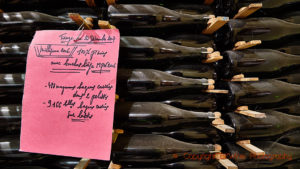 Grower champagnes and house champagnes. Is one better than the other? You can decide that for yourself in Champagne in September. We will visit both small growers, smaller houses and larger houses. There are, of course, lovely champagnes from producers of all sizes. Sometimes you choose a growers’ champagne because it feels like a more personal individualistic wine. Sometimes you choose a well-known brand, precisely because it is well-known (and others recognise it). Anselme Selosse from Champagne Jacques Selosse in Avize was one of the pioneers of grower champagnes in the 1980s. He paved the way for other growers with his terroir philosophy which was something new in Champagne at the time. We will have lunch in his superb small restaurant in Avize.
Grower champagnes and house champagnes. Is one better than the other? You can decide that for yourself in Champagne in September. We will visit both small growers, smaller houses and larger houses. There are, of course, lovely champagnes from producers of all sizes. Sometimes you choose a growers’ champagne because it feels like a more personal individualistic wine. Sometimes you choose a well-known brand, precisely because it is well-known (and others recognise it). Anselme Selosse from Champagne Jacques Selosse in Avize was one of the pioneers of grower champagnes in the 1980s. He paved the way for other growers with his terroir philosophy which was something new in Champagne at the time. We will have lunch in his superb small restaurant in Avize.
Read more about the Champagne wine tour, 11-15 September 2019. Book now!
South Africa with Bordeaux blends, pinotage, spectacular scenery and passionate winemakers | wine tour
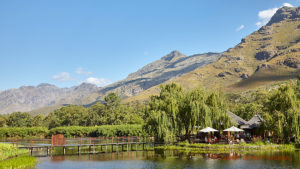 South Africa is, of course, a New World country but an old one and with a pleasant climate that makes it possible to obtain both good acidity and good structure in the wines. Rarely do they become too heavy. The red Bordeaux grapes are very popular. South Africa also has its very own grape, the pinotage. It is a crossing, made here in 1925, between pinot noir and the southern French grape cinsault. At that time, cinsault was called hermitage in South Africa, hence the name pinotage. Pinotage is grown only on around 7% of the vineyard area. But many producers want to promote the grape and since a few years back there is a wine type called Cape Blend. This blend must contain a certain amount of pinotage. Today, the talented winemakers make fantastic pinotage wines. We will try some of these on the tour. Pinotage is grown for instance in Stellenbosch which will be our last stop on the tour. Before that, we visit Franschhoek, Elgin, Hemel-en-Aarde, Bot River and of course Cape Town. You can expect delicious meals, spectacular scenery and passionate winemakers. Join us in February.
South Africa is, of course, a New World country but an old one and with a pleasant climate that makes it possible to obtain both good acidity and good structure in the wines. Rarely do they become too heavy. The red Bordeaux grapes are very popular. South Africa also has its very own grape, the pinotage. It is a crossing, made here in 1925, between pinot noir and the southern French grape cinsault. At that time, cinsault was called hermitage in South Africa, hence the name pinotage. Pinotage is grown only on around 7% of the vineyard area. But many producers want to promote the grape and since a few years back there is a wine type called Cape Blend. This blend must contain a certain amount of pinotage. Today, the talented winemakers make fantastic pinotage wines. We will try some of these on the tour. Pinotage is grown for instance in Stellenbosch which will be our last stop on the tour. Before that, we visit Franschhoek, Elgin, Hemel-en-Aarde, Bot River and of course Cape Town. You can expect delicious meals, spectacular scenery and passionate winemakers. Join us in February.
South Africa, February 15-23, 2020. Book your wine tour to South Africa now!
New Zealand’s stellar career as a wine country | wine tour
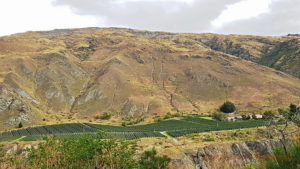 New Zealand is a young wine country that has had a fabulous career. The wines from New Zealand are either the highest or second highest priced wine category in the USA, the United Kingdom and in China. This doesn’t mean that the wines are always very expensive. Rather, it shows that the quality is on average very high. This is one good reason to go to New Zealand on a wine tour. Of course, you can drink New Zealand wines at home. But doing it on site, in the vineyards of the country, is a totally different thing.
New Zealand is a young wine country that has had a fabulous career. The wines from New Zealand are either the highest or second highest priced wine category in the USA, the United Kingdom and in China. This doesn’t mean that the wines are always very expensive. Rather, it shows that the quality is on average very high. This is one good reason to go to New Zealand on a wine tour. Of course, you can drink New Zealand wines at home. But doing it on site, in the vineyards of the country, is a totally different thing.
We will visit many wineries on this 16-day trip. But we will also have time for sightseeing and getting to know the country’s culture. Our bus takes us from Auckland in the north to Rotorua where we will stop and look at the amazing geysers. We will visit Hawke’s Bay and taste its fantastic syrah wines. Next stop is Wairarapa where they make powerful pinot noir, very different from the ones in more famous Central Otago. Wellington, the capital, is well worth the hours we spend here. The ferry will take us across Cook’s Strait to the South Island. Here we experience Marlborough, glaciers, seals, local lobster (yummy!) and the spectacular Central Otago with a Lord of the Ring feeling, in the far south.
New Zealand, March 9-24, 2020. Book your wine tour to New Zealand now!
Don’t be an egoist! Share with your friends and other wine enthusiasts! Forward the Brief to your friends! Suggest that they sign up for a free subscription !
© Copyright BKWine







